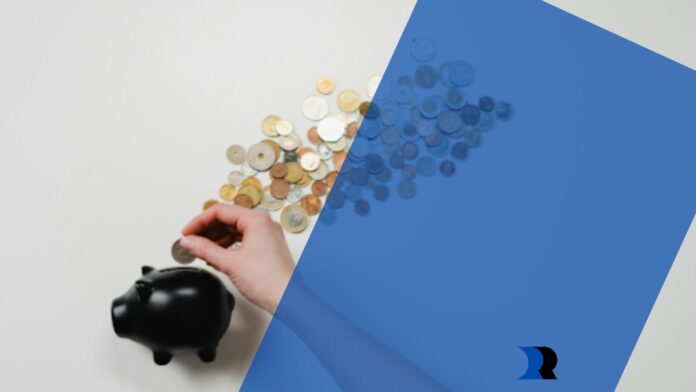In 2025, the pressure to manage money wisely is real. Inflation continues to affect everyday costs, and market uncertainty has many people thinking twice about how they save. Most Americans still don’t have enough saved for retirement.
On top of that, income limits, tax rules, and contribution thresholds keep changing. If you’re earning more now, you may not qualify for some of the same tax benefits you did a few years ago. That’s why it’s important to understand the new financial landscape and use every tool available to make smarter money moves.
This article breaks down some steps you can take right now to get ahead. These aren’t just general tips — they’re clear, useful strategies that fit today’s rules and rates.
Take Advantage of IRA Options
Individual Retirement Accounts (IRAs) are still one of the best ways to grow money for retirement. A Roth IRA is ideal if you think you’ll be in a higher tax bracket later. You pay taxes now, but withdrawals in retirement are tax-free. A traditional IRA works well if you want to lower your taxable income today.
For 2025, contribution limits have increased slightly. Depending on your income, you may qualify for full or partial contributions. If you’re not eligible for a Roth IRA because of income limits, a traditional IRA may still work for you. In some cases, a backdoor strategy can help you move funds into a Roth even if your income is too high.
Explore the Mega Backdoor Roth Strategy
If you earn a high income and have access to a 401(k) plan that allows after-tax contributions, you may qualify for a mega backdoor Roth. This strategy lets you contribute more than the standard 401(k) limit and roll that extra money into a Roth IRA.
So, what is a mega backdoor Roth? It’s a method that uses after-tax contributions to a 401(k) and then transfers those funds into a Roth account. This move allows your money to grow tax-free and avoids the income limits that normally block high earners from using Roth IRAs.
Not all 401(k) plans support this, and the process can be tricky. But if your plan allows it, the mega backdoor Roth is one of the most powerful ways to grow tax-free retirement savings. It’s smart to speak with a financial advisor before taking action to make sure all the rules line up.
Make Saving Automatic Each Month
One of the easiest ways to save more is to automate your transfers. Set a fixed amount to move from your checking account to your savings or investment account every payday. This takes away the need to remember or think about it.
When savings happen automatically, they become part of your routine. You’re less likely to skip a month or spend the money elsewhere. Even if you start with just $100 a month, the habit builds quickly. Over time, you may find you’re saving more than you thought possible — without feeling the impact day to day.
Move Your Savings to a High-Yield Account
Leaving your savings in a standard account with 0.01% interest just doesn’t make sense anymore. In 2025, online banks and credit unions are offering high-yield savings accounts with interest rates of 4% or more. That’s a much better return with no added risk.
Switching to a high-yield account is fast and free. Most of these accounts are FDIC insured, and you can link them to your checking account for easy transfers. If you’re saving for short-term goals — like a car, vacation, or emergency fund — this move lets your money work harder without locking it away.
Track Every Dollar with a Realistic Budget
If you want to save more, you need to know exactly where your money goes. Many people think they’re budgeting, but they’re only guessing. In 2025, there are better tools than ever to help you create a real plan. Some apps make it easy to track every expense, set savings goals, and monitor progress.
The key is being honest with yourself. A good budget doesn’t mean cutting out everything you enjoy. It just means having a clear view of your spending. Once you see the full picture, you’ll likely find areas to cut back—like unused subscriptions or frequent delivery fees. That money can go straight into your savings or investment accounts.
Refinance Debt to Free Up Cash
Carrying debt with high interest makes saving harder. If you have credit card balances or personal loans, look into refinancing. Interest rates in 2025 have started to stabilize, and there are lenders offering better terms to borrowers with strong credit.
Refinancing lets you trade a high-interest loan for one with a lower rate or a better repayment schedule. This can lower your monthly payments and help you pay off the balance faster. The money you save each month can go toward your financial goals instead of interest.
Stick with Low-Cost, Broad Investments
Investing can be confusing, but it doesn’t have to be. In 2025, many experts still agree that simple index funds are a smart choice for long-term growth. These funds follow the market and cost far less than actively managed options.
Instead of trying to pick the next hot stock, choose a few broad funds that spread your money across many companies. Look for funds with low expense ratios and a solid history. Over time, consistent investing in these types of funds often outperforms riskier strategies. It also keeps things simple and stress-free.
Check-In on Your Goals Every Few Months
Saving isn’t something you set and forget. Your income, expenses, and priorities may shift during the year. That’s why it’s smart to check in on your financial plan at least every three months. This doesn’t take long—just review your budget, account balances, and goals.
Make adjustments if needed. Maybe you got a raise and can increase your savings rate. Or maybe an unexpected expense changed your plan. Keeping things updated helps you stay in control and avoid surprises later.
Being a smart saver in 2025 doesn’t mean having a perfect plan. It means making a series of clear, informed choices that reflect where you are now and where you want to go. Whether it’s switching to a high-yield savings account, using new tax rules to your advantage, or understanding what is a mega backdoor Roth, the steps you take today can help build a stronger future.
You don’t need to do everything at once. Start with one change, make it a habit, and move to the next. The more consistent you are, the more your savings will grow. And that’s the smartest move of all.




